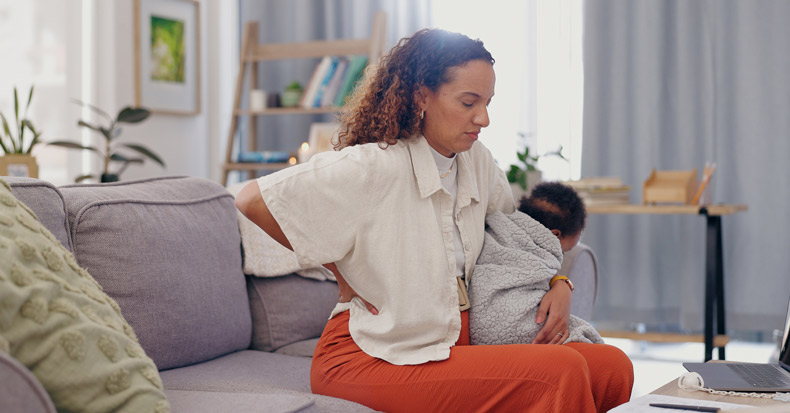It’s estimated that as many as 50–70% of new mothers experience low back pain and related disability, which can hinder their ability to carry out daily activities such as household chores, self-care, and meeting the physical demands of infant care—including feeding, lifting, and carrying. When severe enough, these physical limitations can contribute to stress, anxiety, and postpartum depression, further interfering with the mother’s ability to bond with her newborn and diminishing her overall quality of life. What are the underlying causes of postpartum low back pain?
Interestingly, some risk factors may be present even before conception. Research suggests that being overweight or obese, physically inactive, or exposed to occupational risk factors such as whole-body vibration, poor ergonomics, and frequent lifting can set the stage for low back pain both during pregnancy and after delivery. Women with a prior history of low back pain are also at elevated risk for symptoms during and following pregnancy.
As the baby grows, the center of mass shifts forward in the body. To compensate, the pelvis tilts anteriorly and the lumbar spine increases in lordosis, placing added stress on the lumbar intervertebral disks and facet joints. The stretching of the abdominal muscles can reduce spinal stability, while hormonal changes that prepare the pelvis for childbirth can increase joint laxity, further affecting stability in the lower spine and pelvic region. To compound these effects, expectant mothers may experience fluid retention, deconditioning from reduced activity, sleep positions that strain the lower back, and psychosocial factors such as stress and anxiety that heighten pain perception.
Childbirth itself can also contribute to postpartum low back pain. The physical effort of pushing during delivery can strain the lower back, and the hormonal changes that allow for ligamentous laxity during pregnancy may persist afterward, leaving the spine more susceptible to mechanical stress. In cases of cesarean delivery, factors such as spinal anesthesia, post-surgical immobilization, and prolonged bedrest can further delay recovery and exacerbate pain.
Unfortunately, it’s a common misconception that postpartum low back pain will simply resolve on its own. In reality, studies suggest that up to 1 in 5 new mothers with low back pain will develop chronic symptoms lasting a year or longer. While some risk factors for postpartum low back pain are beyond a woman’s control, others—such as maintaining an active lifestyle, avoiding prolonged inactivity, and seeking chiropractic care to help restore proper joint motion and function in the lumbar spine during and after pregnancy—can play a key role in prevention and recovery.
